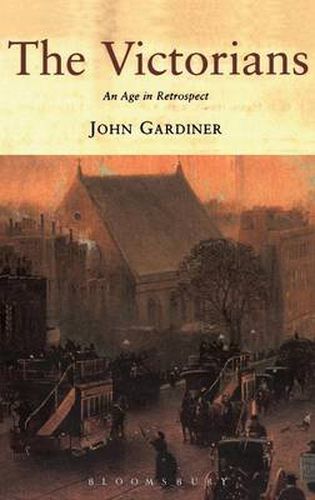Readings Newsletter
Become a Readings Member to make your shopping experience even easier.
Sign in or sign up for free!
You’re not far away from qualifying for FREE standard shipping within Australia
You’ve qualified for FREE standard shipping within Australia
The cart is loading…






Who were the Victorians? Were they self-confident imperialists secure in the virtues of the home, and ruled by the values of authority, duty, religion and respectability? Or were they self-doubting and hypocritical prudes whose family life was authoritarian and loveless?
Ever since Lytton Strachey mocked Florence Nightingale and General Gordon in Eminent Victorians, the reputation of the Victorians, and of what they stood for, has been the subject of vigorous debate.
John Gardiner provides a fascinating guide to the changing reputation of the Victorians during the 20th century, and explores how different social, political, and aesthetic values, two World Wars, youth culture, nostalgia, new historical trends and the heritage industry have all affected the way we see the age and its men and women.
The second half of the book shows how radically biographical accounts have changed over the last hundred years, exemplified by four archetypical Victorians: Charles Dickens, W.E. Gladstone, Oscar Wilde and Queen Victoria herself.
$9.00 standard shipping within Australia
FREE standard shipping within Australia for orders over $100.00
Express & International shipping calculated at checkout
Who were the Victorians? Were they self-confident imperialists secure in the virtues of the home, and ruled by the values of authority, duty, religion and respectability? Or were they self-doubting and hypocritical prudes whose family life was authoritarian and loveless?
Ever since Lytton Strachey mocked Florence Nightingale and General Gordon in Eminent Victorians, the reputation of the Victorians, and of what they stood for, has been the subject of vigorous debate.
John Gardiner provides a fascinating guide to the changing reputation of the Victorians during the 20th century, and explores how different social, political, and aesthetic values, two World Wars, youth culture, nostalgia, new historical trends and the heritage industry have all affected the way we see the age and its men and women.
The second half of the book shows how radically biographical accounts have changed over the last hundred years, exemplified by four archetypical Victorians: Charles Dickens, W.E. Gladstone, Oscar Wilde and Queen Victoria herself.